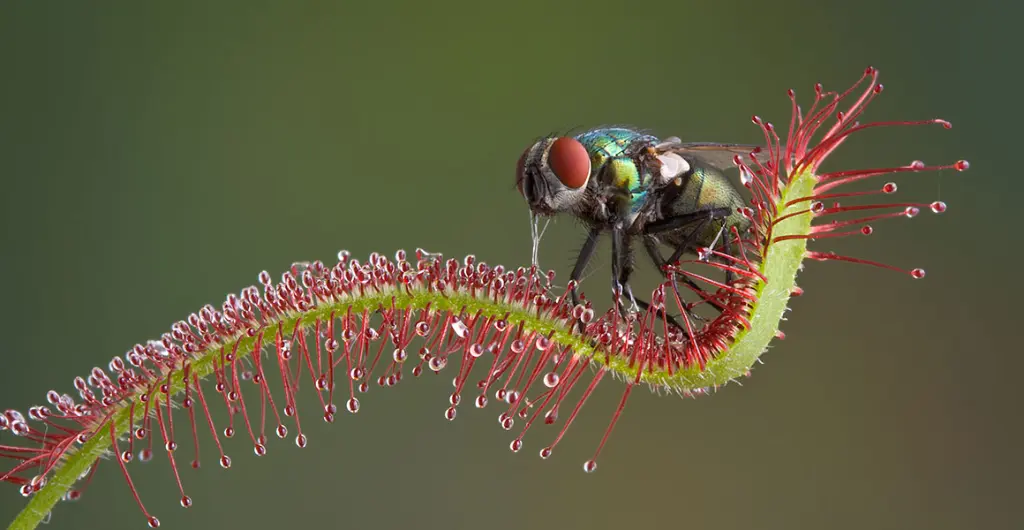
Carnivorous plants are a unique group of plants that have adapted to environments with poor nutrient availability by developing mechanisms to trap and digest prey, primarily insects and other small animals.
These plants are not only fascinating from a botanical perspective but also provide insights into the adaptive strategies of plants in nutrient-poor habitats. This blog will delve into the world of carnivorous plants, exploring their various types, mechanisms of trapping prey, habitats, and the care they require.
Types of Carnivorous Plants
Carnivorous plants can be broadly categorized into several types based on their trapping mechanisms:
- Pitfall Traps
- Flypaper Traps
- Snap Traps
- Bladder Traps
- Lobster Pot Traps
Pitfall Traps
Pitfall traps involve leaves that form deep cavities filled with digestive enzymes or bacteria. The most famous example is the pitcher plant (Nepenthes, Sarracenia, Heliamphora). These plants attract prey with nectar and bright colors, causing them to fall into the trap where they are digested.
| Species | Habitat | Trap Type | Notable Features |
|---|---|---|---|
| Nepenthes | Southeast Asia | Pitfall | Large, colorful pitchers |
| Sarracenia | North America | Pitfall | Trumpet-shaped leaves |
Flypaper Traps
Flypaper traps utilize sticky mucilage on their leaves to capture and digest prey. Examples include sundews (Drosera) and butterworts (Pinguicula).
| Species | Habitat | Trap Type | Notable Features |
|---|---|---|---|
| Drosera | Worldwide | Flypaper | Sticky glandular hairs |
| Pinguicula | Northern Hemisphere | Flypaper | Greasy, sticky leaves |
Snap Traps
Snap traps are perhaps the most dramatic. The Venus flytrap (Dionaea muscipula) is the most famous example, with modified leaves that snap shut when trigger hairs are touched.
| Species | Habitat | Trap Type | Notable Features |
|---|---|---|---|
| Dionaea muscipula | North Carolina | Snap | Rapid leaf closure mechanism |
Bladder Traps
Bladder traps are used by bladderworts (Utricularia), which have small, vacuum-sealed bladders that suck in prey when triggered.
| Species | Habitat | Trap Type | Notable Features |
|---|---|---|---|
| Utricularia | Aquatic and terrestrial | Bladder | Rapid suction traps |
Lobster Pot Traps
Lobster pot traps are more complex and involve a combination of directional hairs and digestive zones. Genlisea is a key genus with such traps.
| Species | Habitat | Trap Type | Notable Features |
|---|---|---|---|
| Genlisea | Tropical wetlands | Lobster Pot | Spiral-shaped underground leaves |
Mechanisms of Trapping and Digestion
Carnivorous plants have evolved intricate mechanisms to trap and digest their prey. These mechanisms can be broadly classified into:
- Attraction
- Capture
- Digestion
- Absorption
Attraction
Carnivorous plants use a variety of methods to lure their prey, including:
- Coloration: Bright colors, especially reds and purples, attract insects.
- Nectar: Sweet secretions entice prey to approach.
- Scent: Some plants emit odors mimicking decaying matter or flowers.
Capture
The capture mechanisms vary significantly:
- Pitfall traps use slippery surfaces and downward-pointing hairs.
- Flypaper traps rely on sticky mucilage.
- Snap traps have rapid movement mechanisms.
- Bladder traps create a vacuum to suck in prey.
- Lobster pot traps guide prey through directional hairs into digestive zones.
Digestion
Once captured, the prey is digested using:
- Enzymes: Proteases and other enzymes break down proteins and other macromolecules.
- Bacterial Symbiosis: Some plants rely on bacteria to decompose their prey.
Absorption
The nutrients from the digested prey are absorbed through specialized structures, providing essential nutrients like nitrogen and phosphorus that are scarce in their native habitats.
Habitats of Carnivorous Plants
Carnivorous plants are found in diverse habitats, often characterized by nutrient-poor conditions. These include:
- Bogs and fens: Acidic, waterlogged environments with low nutrient availability.
- Savannas and grasslands: Areas with poor, sandy soils.
- Tropical rainforests: Certain epiphytic species thrive on trees in nutrient-depleted canopies.
- Aquatic environments: Some species, like bladderworts, live in water bodies.
Seasonal Care Guide for Carnivorous Plants
Proper care is essential for cultivating healthy carnivorous plants. Here’s a handy seasonal guide to help you manage their care throughout the year:
| Month | Watering | Feeding | Repotting | Dormancy |
|---|---|---|---|---|
| January | Moderate | No | No | Yes |
| February | Moderate | No | No | Yes |
| March | High | Yes | Yes | No |
| April | High | Yes | Yes | No |
| May | High | Yes | No | No |
| June | High | Yes | No | No |
| July | High | Yes | No | No |
| August | High | Yes | No | No |
| September | High | Yes | No | No |
| October | High | Yes | No | No |
| November | Moderate | No | Yes | Yes |
| December | Moderate | No | Yes | Yes |
General Care Tips
- Watering: Use distilled or rainwater to avoid mineral buildup. Keep the soil consistently moist but not waterlogged.
- Light: Provide bright, indirect sunlight for most species. Direct sunlight can be beneficial for some.
- Feeding: While these plants can catch their prey, supplemental feeding with insects can boost growth, especially in indoor settings.
- Soil: Use a well-draining, acidic mix such as peat and sand.
- Humidity: High humidity is crucial for most carnivorous plants, mimicking their natural habitats.
Notable Carnivorous Plants
Venus Flytrap (Dionaea muscipula)
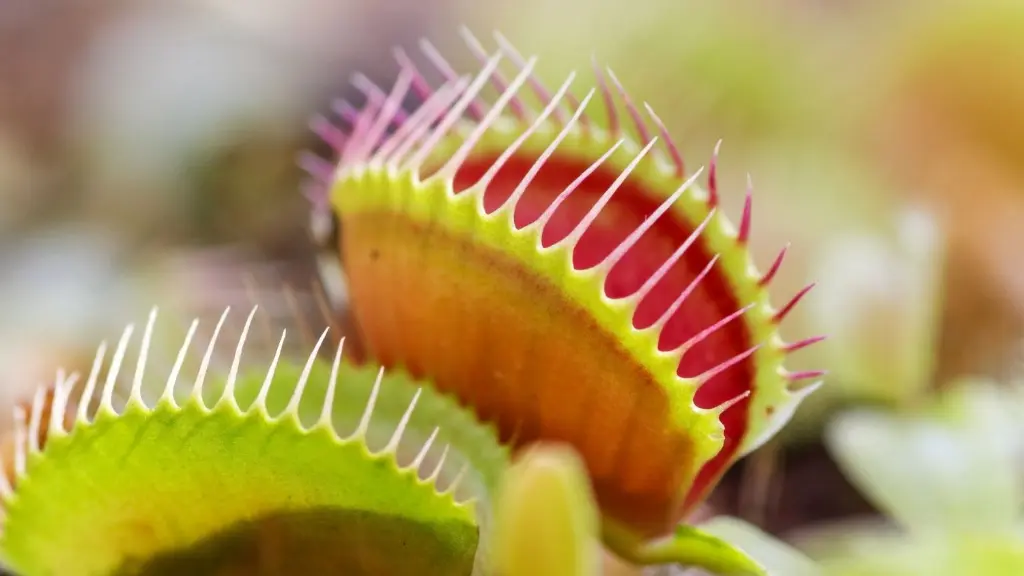
The Venus flytrap is perhaps the most well-known carnivorous plant. Native to the subtropical wetlands of North Carolina and South Carolina, this plant has distinctive traps that close rapidly in response to touch. Each trap has sensitive hairs; when an insect touches these hairs twice, the trap snaps shut, capturing the prey for digestion.
Pitcher Plants (Nepenthes, Sarracenia, Heliamphora)
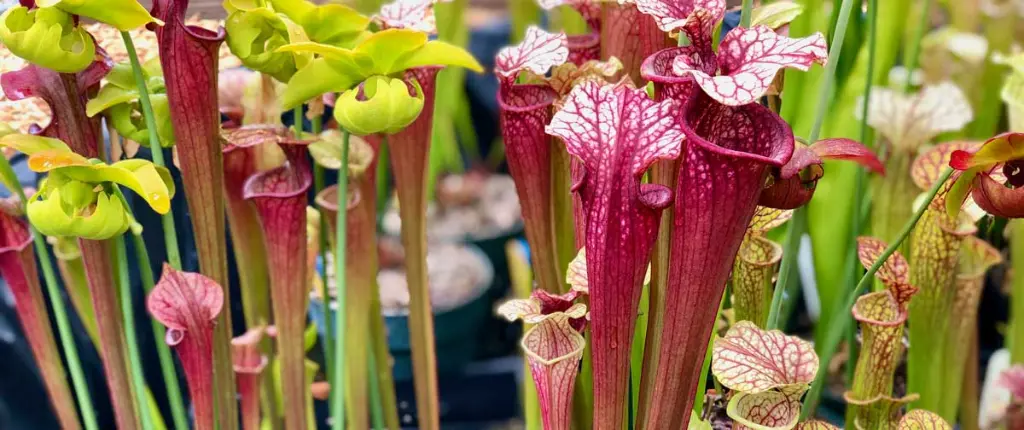
Pitcher plants have evolved deep, pitcher-shaped leaves filled with digestive fluids. These plants often feature vibrant colors and nectar to lure prey. Once an insect slips into the pitcher, it is unable to escape due to downward-pointing hairs and slick surfaces, eventually drowning and being digested.
Sundews (Drosera)

Sundews are widespread, found on every continent except Antarctica. They have glandular hairs on their leaves that secrete sticky mucilage. Insects get trapped in this mucilage, and the leaves slowly curl around the prey to maximize digestion and nutrient absorption.
Bladderworts (Utricularia)
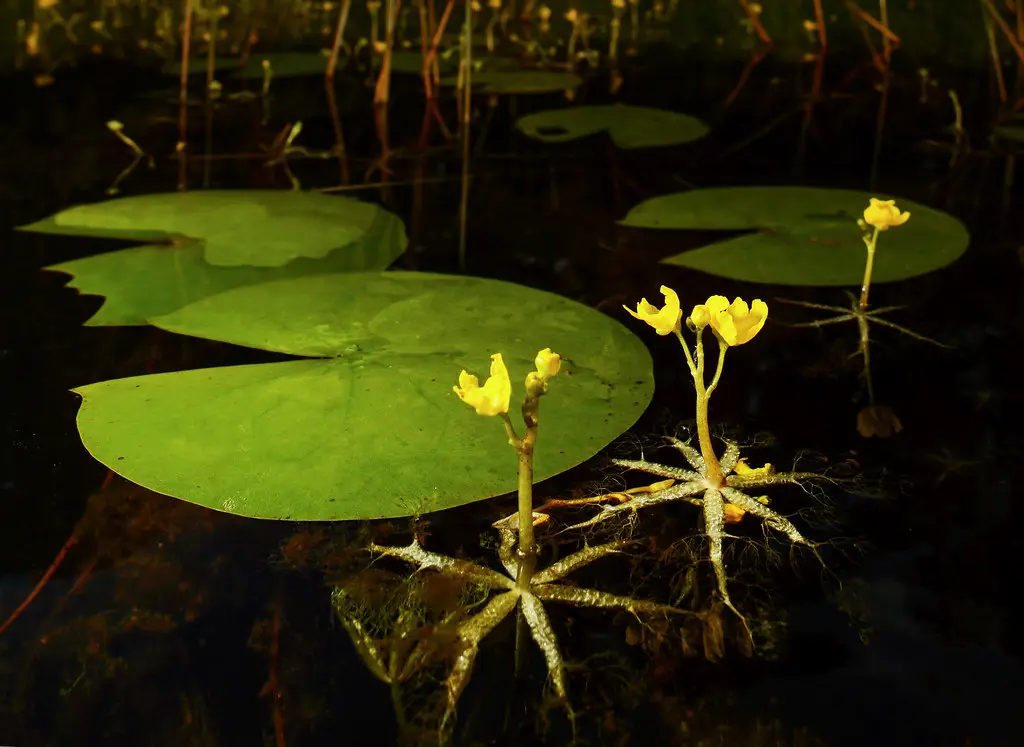
Bladderworts are unique aquatic or terrestrial plants with small bladder-like traps. These traps create a vacuum that sucks in tiny prey when trigger hairs are touched. They are often found in waterlogged soils and are the fastest known plant traps.
Butterworts (Pinguicula)
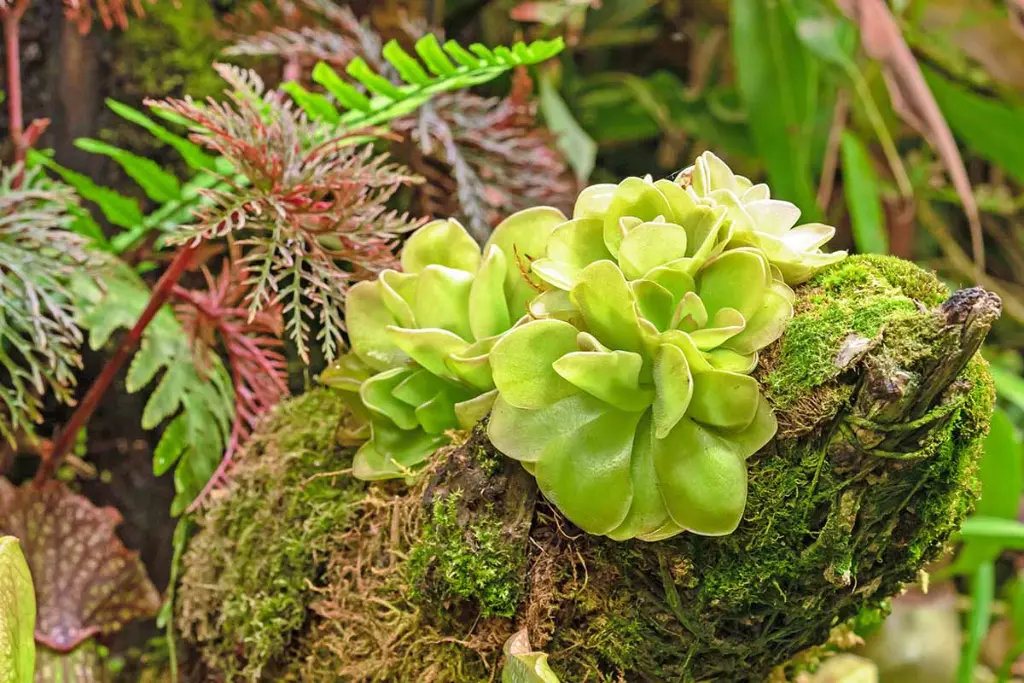
Butterworts have greasy, sticky leaves that function like flypaper. Insects become stuck on the leaves and are digested by enzymes secreted by the plant. These plants are often found in temperate and tropical regions.
Cobra Lily (Darlingtonia californica)

The Cobra Lily has a unique appearance, resembling a rearing cobra. Native to the bogs of Northern California and Oregon, it features a twisted, tubular leaf structure that confuses and traps insects. The hooded leaf structure and downward-pointing hairs prevent prey from escaping.
Evolution and Adaptation
The evolution of carnivorous plants is a fascinating study in adaptation. These plants have evolved independently in various lineages, demonstrating convergent evolution. This means different species have developed similar traits to adapt to similar environments. Factors that contributed to the evolution of carnivory in plants include:
- Nutrient-Poor Soils: Carnivory allows plants to supplement their nutrient intake in environments where soil nutrients are insufficient.
- Waterlogged Conditions: Many carnivorous plants thrive in wet environments where competition for nutrients is high, and decomposing organic matter is scarce.
Conservation of Carnivorous Plants
Many carnivorous plants are threatened by habitat loss, climate change, and overcollection. Conservation efforts are crucial to protect these unique species. Key strategies include:
- Habitat Preservation: Protecting the natural habitats of carnivorous plants is vital. This includes conserving wetlands, bogs, and other nutrient-poor ecosystems.
- Cultivation and Propagation: Encouraging the cultivation of carnivorous plants can reduce pressure on wild populations. Botanical gardens and nurseries play a significant role in this effort.
- Public Awareness: Educating the public about the importance and uniqueness of carnivorous plants can foster a greater appreciation and support for their conservation.
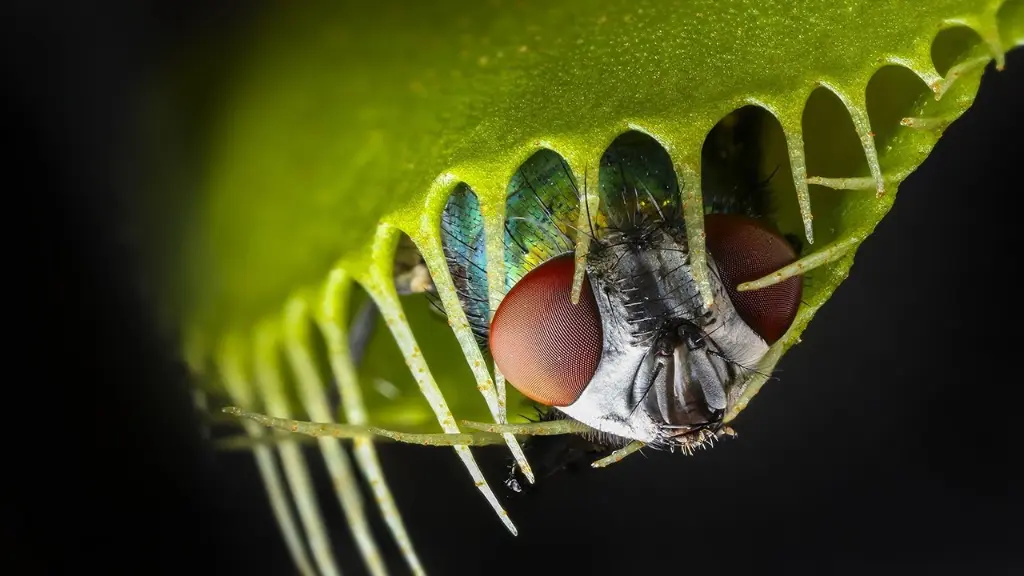
Carnivorous plants are a testament to the incredible diversity and adaptability of the plant kingdom. From the dramatic snap of the Venus flytrap to the intricate suction mechanisms of bladderworts, these plants have evolved a myriad of ways to thrive in challenging environments.
Understanding and appreciating these unique plants can inspire conservation efforts and further scientific exploration. Whether you are a botanist, a gardener, or simply a nature enthusiast, the world of carnivorous plants offers endless fascination and wonder.
By delving into their biology, habitats, and care, we can better appreciate these natural marvels and ensure their preservation for future generations.



